Welcome to a new issue of the Journal of Runic Studies, the premier Malkioni publication for studies into the nature of Glorantha. If you haven’t subscribed yet, please consult with the spirit bound to the appropriate electronic page.
God Learner Sorcery
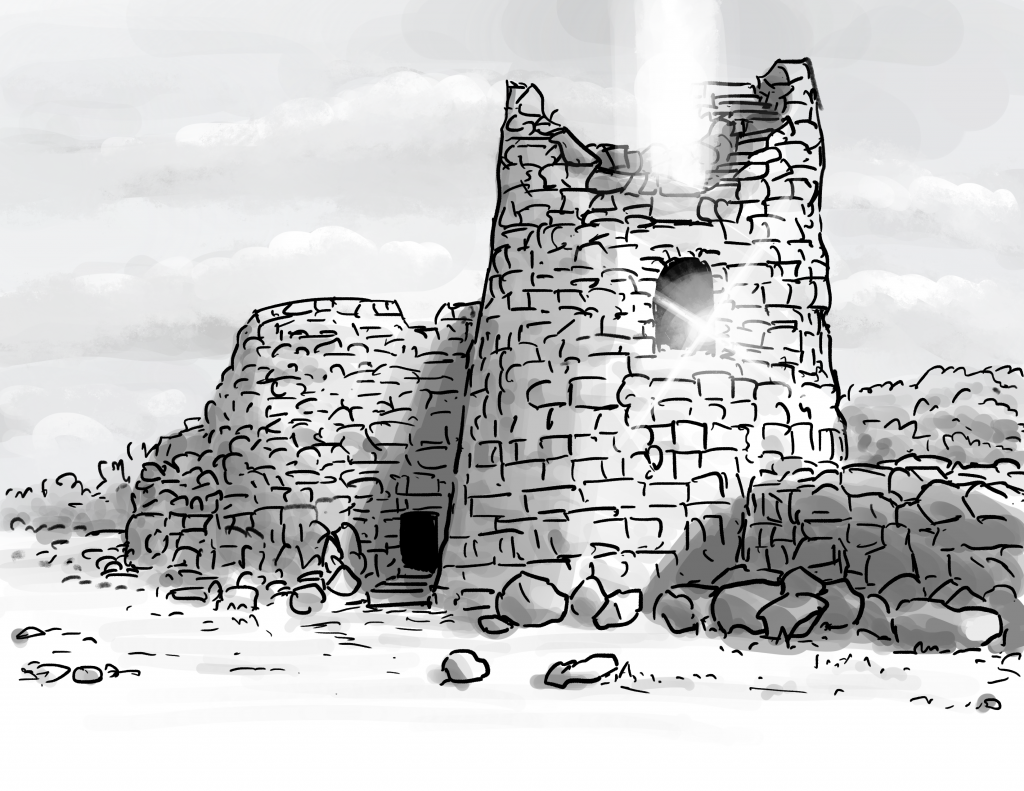
We are now occupying a nice little tower with a long history of previous occupants who have left behind documents, tablets, artifacts, and other kinds of junk. As we clean up and archive these things, we share the most interesting ones with you.
Runic Rants: Experience Checks (Part 1)
A new Runic Rants article is out, and it deals with Experience Checks. In this first of a (probably) two-part article, I look at when to get award these checks.
RuneQuest Glorantha is one of those games that has many rules disseminated throughout their hefty rulebook. I often overlook or forget a detail about some rules (which is frankly a problem with this rulebook, but let’s not go into that rabbit hole), and one thing that is easily overlooked is the real rules behind Experience Checks. They are more complicated than you may think!
I’m hoping to write part 2 for next week but don’t hold your breath… We are the God Learners, we do what we want!
Get Ready for some Kraken News
Joerg is currently at the Kraken convention, gathering gossip, taking blurry pictures, and maybe even possibly interviewing a few people! Or, most likely, eating lots of upscale food, drinking beer, and gushing over the RuneQuest Starter Set copy he has gotten his hands on.
Chaosium News

Here are this week’s Chaosium news!
It’s Greg Stafford Week Again!
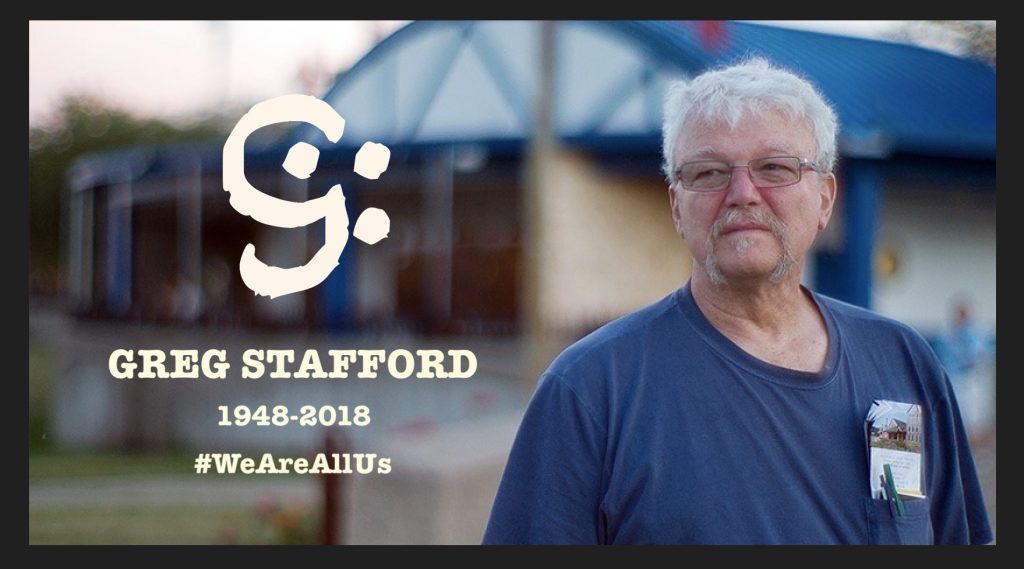
Chaosium founder and first Gloranthan heroquester Greg Stafford passed away on 10th October 2018, so this week was a “We Are All Us” kind of week. I hope you all played a game in his honour this week… I know I forgot to mention him in my weekly RuneQuest game! Aaargh!
If you don’t know what to play, remember that Chaosium has some free adventures for the occasion. Pendragon might be an even better choice than RuneQuest!
Chaosium-Con 2022

After several online “Impromptu Con” conventions, Chaosium seems ready to level-up (or initiate?) into more “proper” conventions: those where you can actually get drunk with a bunch of other nerds.
It will be happening 8-9th April 2022, at the Ann Arbor Marriot Ypsilanti near Detroit. We don’t know yet if the God Learners will be there (we’ll update you on that when we know!), but if you have any more interesting questions about the convention, Chaosium has an FAQ page just for you! You can also sign-up for a special mailing list for news about that convention.
The Chaotic Chaosium Logo
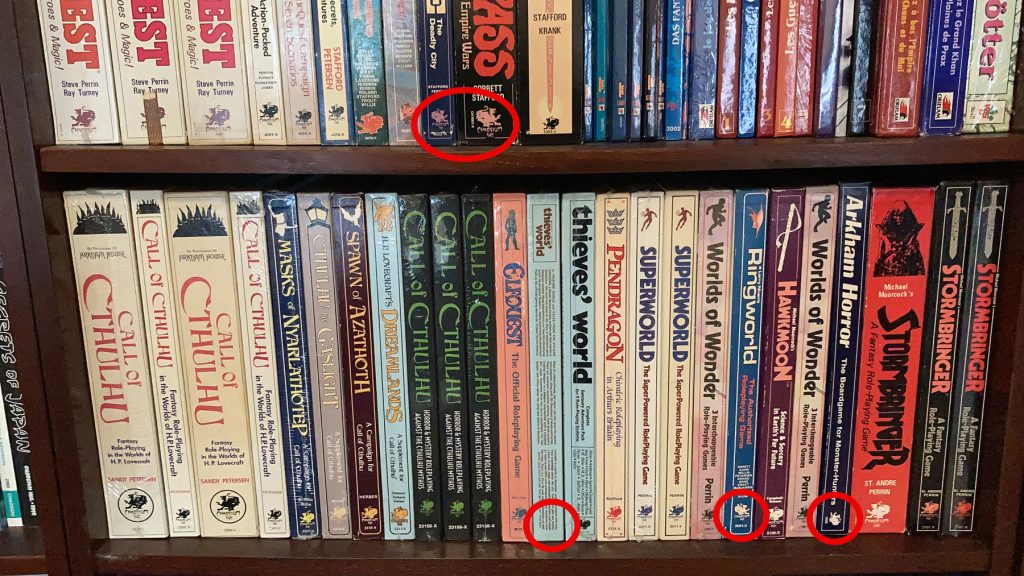
I love these stories and investigations from Rick Meints, Chaosium’s president and foremost collector. This latest article covers the origin of the Chaosium logo, and why it doesn’t always faces to the right…
How to Get Started with RuneQuest
James Coquillat continues his interviews with the Chaosium designers and line editors. He’s back with Jeff Richard, the creative designer currently behind Glorantha and RuneQuest.
This is a short video, as usual, with quick blurbs about what makes RuneQuest different from other games, what will be in the upcoming RuneQuest Starter Set, why it’s a good way to, indeed, get started with RuneQuest, and what are good tips Jeff can share with new players. There’s nothing any Gloranthan veteran hasn’t heard before, but it’s a short enough marketing video that you can possibly send it to your players to sell them on RuneQuest for your next campaign!
Jonstown Compendium

The Jonstown Compendium is Chaosium’s community content program for all Gloranthan games, hosted on DriveThruRPG. Disclaimer: all the relevant links are affiliate links that hopefully will let us cover some of the hosting and maintenance costs for the website and podcast! Thanks for using them!
Andrew Logan Montgomery on Bad Day At Duck Rock

The recently released Bad Day at Duck Rock already has a review by Andrew Logan Montgomery, who seems to really, really like it:
It is also an adventure I would heartily recommend to a new GM. Bad Day at Duck Rock is written with terrific clarity and care, with support at every twist and turn to help GMs run it. Nothing here comes off fuzzy or half-baked. I get the definite feeling that in the years this was playtested, Hart took the opportunity to refine, retool, and clarify. […]
It is a terrific entry to the Jonstown Compendium.
Jeff’s Notes

Jeff Richard, the current mastermind on everything Gloranthan at Chaosium, is often posting notes and thoughts on the RuneQuest Facebook group. Here’s our curated list from the past week. A partial archive of these sources is compiled on the Well of Daliath.
A Story Every Orlanthi Knows
I’m not going to quote the entire story here because it’s long (and it will end up on the Well of Daliath sooner or later), but that’s the kind of thing where I’m completely ignorant and useless. Deciphering these kinds of myths requires both an understanding of mythological patterns and of Gloranthan lore. I’ve got both of those skills near their default score so I’ll probably do a bad job at analyzing it… which is why I’m going to do it right now, in depth! And it will end up being longer than the original story! Yay! (You’re here for this kind of stuff, right?)
The story is a new and expanded version of “The Arming of Orlanth”, which you can find in King of Sartar (2nd edition, p68). It starts with Orlanth being unhappy because his wife, Ernalda, isn’t there, the food and drinks don’t taste good, the guests aren’t respectful, and so on. What a big baby. And instead of making a sandwich and binge-watching something on Netflix, like what any sane person would do on a sad Sunday, he starts brooding and losing his temper. Note that when he broods, that brings “Bad Rain”:
When he broods the clouds gather and do not drop their rain, growing black and grim. This is called “Bad Rain” and monsters can come with it.
At least, he protects his people from his own brooding monsters, so there’s that.
Now, people tell him all of this is because the “Grand Order” is lost, and needs to be found again. Lhankor Mhy says that the Grand Order is “a mirror of fire” which is “past the edge of the world”. I assume this “Grand Order” is the order provided by the Sun God, which is at this point dead since this tale supposedly happens during the Darkness. And so after getting all geared up and leaving some people in charge, he sets off from the Hill of Himself Victorious upon his quest…
So, err, is the Lightbringers’ Quest effectively triggered because Orlanth has left his home get messy, with only cold pizza in the fridge, when there’s no woman around to take care of groceries and house cleaning? What a loser. And I mean, sure, according to the other tales, there’s more to it, like the death of Kero Fin, but… still. Dude. Stop being so dramatic, pick up the vacuum and learn to cook!
Anyway, whereas the King of Sartar version has Heler arming Orlanth with all kinds of stuff, the new version from Jeff has Orlanth arming himself with different stuff, and Heler as a companion:
So Orlanth armed himself. He bore:
• his Ring,
• the Four Sacred Weapons,
• Four Winds and a net,
• the Black Spear and the Red Spear,
• the Three Other Winds and a bag,
• the Thunderstone,
• the Blue dye,
• the Spear of Truewood,
• the Rare Flower, and
• his First Knife.Orlanth called his companions to aid him:
• Heler, the Blue God
• Mastakos the Charioteer
• Crisis and Rage, his two stamping horses.
It’s similar to the King of Sartar version, but different enough to be noted. I’ve got no idea what most of this gear is besides random cool sounding stuff, plus some name-dropping. I know about Thunderstones (rocks going boom) and blue dye (magic nudist armor, see the Bless Woad spell). The Bag of Winds is something Storm Voices like to make in their spare time, probably to emulate Orlanth here. The Black Spear, is that the Colymar one? Is the “Spear of Truewood” one of the original “True (weapon)” feats? Maybe. I love these kinds of epic and evocative mythological names. Sadly, I’m bad at coming up with them myself.
Unlike the King of Sartar version, there’s nothing about leaving someone in charge at the Storm Tribe stead, but there’s more about the early journey. For instance we get a quick encounter with Humakt, and a visit to the “strong house of his mother“, which had been ruined and overtaken by wild dogs. Orlanth kills most of them except one, which escapes. This bit has more to do with Mastakos and Kang Rowl (the dog who escaped), and you can find that story in “The Healing of Mastakos” (King of Sartar 2nd edition, p61). Jeff is using some advanced heroquesting techniques to range from one myth to another!
Next, Orlanth visits Kero Fin, and has a quick word with his father, “the Prisoner God, tied to the Earth and Sky” (remember that Umath made himself a place in the universe by separating the Earth and the Sky, but then I guess he got stuck there, “punished by being chained between them for all eternity“).
“I cannot move. The Triad makes the wind. There is One calling you, follow it. There is Another hunting you, avoid it. There is the Third, Unknowable, which you fear.”
That bit comes from “The Belorden Fragment”, reproduced in Sartar: Kingdom of Heroes (p196). The same goes for what follows, where Orlanth gazes upon the horizon and sees nine gods. It’s somewhat easy to figure out who the nine gods are (many are named directly, others are described well enough to make a guess or two), but I’m not sure what Umath means here. As far as I can tell, Umath is providing wisdom specific to the one asking for it, and the visions from atop Kero Fin are part of it. In the Belorden Fragment, for instance, the scribe mentions that they re-enacted this myth, and although the bit of wisdom is the same, the gods they saw were different.
So I guess among the nine gods, one is calling to Orlanth, one is hunting him, and one is that which Orlanth fears. I’ve got no good idea which is which. Jeff says: “we all have the Triad after all, we all move and change“. I wonder if there’s some kind of trick answer, with these three gods respectively being Ernalda (calling him), Yelm (hunting him), and himself (which he fears because he messed up the world… and remember that Orlanth Lightbringer is a different aspect from, say, Orlanth Adventurous, so one could run into the other in a myth).
Anyway, Orlanth follows “The One Who Called Him” which, if I understand it correctly, is a “kinsman to the west”. Thanks to Mastakos, who can run around the world super fast, Orlanth can also travel super fast by following in Mastakos’ foot prints:
He placed his left foot carefully upon the bootprint in the Smoking Ruins, and his right upon the edge of the home of Jarani Whitewall, the son of Ragorn, the son of Jorganos Archer, the son of Vingkot.
Wait, what? Are those the same Smoking Ruins as the ones in the South Wilds? The ones that wouldn’t be “ruins” until the late First Age, and wouldn’t be “smoking” until the 1200s? I’m confused. I guess we don’t care about temporal coherence when we’re in the God Time…
So what do you make of all this?
Ranging and Joining
Jeff tells us about another advanced heroquesting technique called Ranging and Joining (you can read about Jeff’s heroquesting basics here and here).
A technique developed by participants in the Tournament of the Masters of Luck and Death, these questers range at the edge of an ongoing quest or ritual and watch for events or entities. If this happens, they join that event and interact with it. Thought by some scholars to be related to the Waltzing and Hunting bands of the Empire of the Wyrms Friends.
Ranging is when you re-enact a myth, and then go from that myth to another myth that “crosses your path”, so to speak. It’s super dangerous because when you switch myths, you are currently Identified with deities and protagonists from that first myth — and unless the other myth has a very similar cast, you will have to also jump between Identifications.
And this is why questers who Range are so much more dangerous than those who simply re-enact existing stories; they discover new myths. And this is why the Lightbringers Quest is so dangerous and so powerful – like the Red Goddess Quest, it always involves Ranging.
In comparison, Ranging and Joining is less dangerous because you don’t go and play the main protagonists of the second myth. Instead, as I understand it, you just leave the first myth and “tag along” for the second myth, merely Identifying with minor characters or even unnamed “extras” in that second myth.
One watches at the edge of a story for a hint of another. An anonymous character gets a name and becomes adventure, or a passing mention becomes a story in its own right. This might provide a new key detail to an important myth, or might be a tangential eddy that swirls around wherever but becomes beloved by local storytellers.
And:
Ranging and Joining is dangerous, but considered less dangerous than pure Ranging, as long as the questers stay in proximity (whatever that means) with the main ongoing quest or ritual. In large heroquests, Rangers and Joiners are typically chosen by spirits, lot, or even just find themselves in the role due to the mysteries of the ritual itself – some say that is the Luck referred to in the Masters of Luck of Death.
There are several other such advanced heroquesting techniques that have spun out of the 22 Tournaments of the Masters of Luck and Death held in the Holy Country’s history. These techniques have then been “disseminated through the Holy Country, Dragon Pass, and even Prax”, and many people (including Kallyr and Argrath) participated in those Tournaments not to seek its prize, but to learn these techniques first-hand. Which is to say: don’t hesitate to have some NPC in your game know about that stuff!
Talk about synchronicity: my current game is going to feature, effectively, Ranging and Joining, only I didn’t know it was “officially” a thing, I didn’t know it had a name, and I didn’t know where it came from. Now I can sprinkle a bit of additional backstory and it’s all good!
For the Lunars among you, note this:
These techniques are different from those taught and used with such great effect by the Lunar Way, but are potentially no less effective.
About Caladraland
One of my favourite unexplored lands in Dragon Pass (they have magic to awaken volcanoes!) gets a bit of coverage from Jeff this week.
Most of the note talks about stuff you would already know from the Guide or the Sourcebook: that Lodril is a big horny Fire & Sky dude who came (in pretty much all meanings of the word) onto the Earth, warming it with his sweet, sweet love fluids, occasionally shooting through and spraying everything around. Well, I mean, Jeff didn’t say it that way, but I definitely am, because Lodril is a sexy dude and I’ve got the mind of a 13 year old…. anyway, after that, things go dark for Lodril (again, literally) as he gets chained down by Argan Argar (the troll god of the Surface) and forced to build a palace on the Shadow Plateau, in southern Dragon Pass. Again, that’s all in the main books, but the following bits may not be (I only found partial matches in my quick searches):
In the First Age, the worshipers of Lodril rebelled and broke away from the trolls. They received help in this from the dwarfs of Gemborg and from those people of the sea who claimed descent from Choralinthor, and received mercenaries from the barbarians of Wenelia.
Gemborg is a Dwarf city in Caladraland, a region south of Esrolia, leading to the ocean (bottom left quadrant in the map below… you can see the end Gemborg’s name, cut from the left edge).

These dwarves later exploited the volcanic area for the forges and workshops, the God Learners got involved with bringing worship of Lodril’s twin children, and Caladraland’s main volcano Veskarthan (supposed to be Lodril himself) erupted in 1050 in anger. Jeff has some more details compared to the Guide:
In the Second Age, the Lodril worshipers welcomed the reunion of Aurelion, Caladra’s twin, and allied with the God Learner province of Slontos against the Shadowlands and their EWF allies. The magnificent golden statue of Eurmal Lightbringer holding aloft a miniature version of the Sun was built by the God Learners at the Lighthouse. But Lodril aided the Old Powers in destroying the God Learners.
A big golden statue of Eurmal? Built by the God Learners? Now this ought to be good!
Later, Belintar came onto the local shores. For the newbies out there, that’s the hero/god/king who transformed the area into the Holy Country (also known as “mythical Disneyland fuelled by magical Battle Royale“… which is my favourite way of describing the Holy Country at its height). The Caladralanders tried to kill him “using both force and magic”:
But they failed, and Belintar used the powers of the Steam Demons to win his assault against their leaders.
Now, Caladraland is “ruled by the priests of the Volcano Twins”. I assume that’s Caladra and Aurelion, the aforementioned twin children of Lodril whose cult was introduced by the God Learners.
The population have adjusted their society around the needs and blessings of the vocano god. They are ruled by King Galerus, who was selected by the ruling council of clan chieftains for his ability to judge people carefully and his ability to lead armies. In 1620, Galerus refused to step down in accordance with tradition. Now called the King of the Diamond Diadem, Galerus allied with the dwarfs of Gemborg, the Demivierge of Rhigos, and the Warlord of Porthomeko. His kingdom has suffered terribly from a decade of barbarian invasions, but he holds onto power with the support of the Caladra and Aurelion cult.
Ok so the “Demivierge of Rhigos” has been Queen of Rhigos since 1610. Rhigos is a sizeable port city in South Esrolia, not far south from Nochet (again, see map above). The title is because the Queen is “sexually promiscuous” and yet still a virgin (“demivierge” means “half virgin” in French). Right. We’re totally buying that. But I guess that’s her loophole for keeping her position of High Priestess of Delaina, the “pure and restrained sister of Ernalda”, who is also the patron Goddess of Rhigos.
Porthomeka is the small but rich region located between Esrolia and Caladraland (see the cities of Steros and Oxnos in the map above). It’s ruled by warlords originally exiled from Caladraland, and it was once part of Esrolia. I imagine it has a pretty tense relationship with both its neighbours, and that’s why it’s a good idea to call yourself “Warlord” to make things clear…
Anyway, like I said, it’s a fairly unexplored (gaming-wise) part of the map, even though it’s rich in myth, politics, and cool things to do. I’d love to play some games there!
Wilmskirk
Jeff tells us that although people like to play in Pavis, Jonstown, or Boldhome, Wilmskirk is also “definitely worth a look“.
This was Wilms the Artist’s first masterpiece, designed by him according to aesthetic and philosophical principles inspired by the Jrusteli, and meant to be a true model city. The city was laid out to be both beautiful and function – and Wilms achieved this. It is a city of crafters, of artists, and is the center of painting and sculpture techniques in Dragon Pass.
So the Jrusteli are basically the God Learners, which everybody despises since they almost destroyed the world with their heroquesting experiments in the Second Age. But the God Learners also have a lasting legacy that people may not even realize is coming from them — the monomyth or mythical synthesis (because it’s “useful and largely correct”), the philosophy and arts, and so on. That’s one of those occurrences.
Here’s Jeff’s sketch of the city, which will probably be made pretty by Matt Ryan for the upcoming Sartar Homeland boxed set:
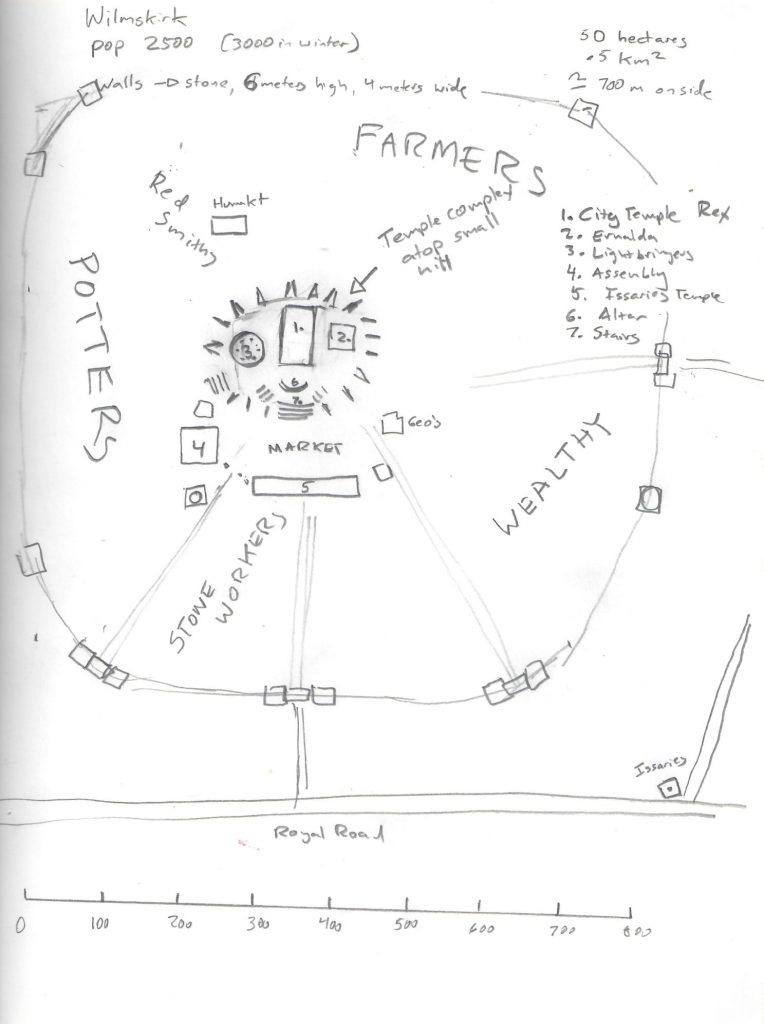
Wilmskirk is shared by the Balmyr, Locaem, Balmyr, and Sambari tribes and it is now ruled by King Vamastal Greyskin of the Sambari, who participated in Starbrow’s Rebellion and is part of the High Council. Vamastal is half-mad through heroquesting, and gained his grey skin on a harrowing trip through Hell. He was friends with Garaystar Flatnose, who was City Rex of Wilmskirk in 1610-1613 but was exiled along with Vamastal after the Rebellion’s collapse.
Here is what the half-mad King of the Sambari looks like:
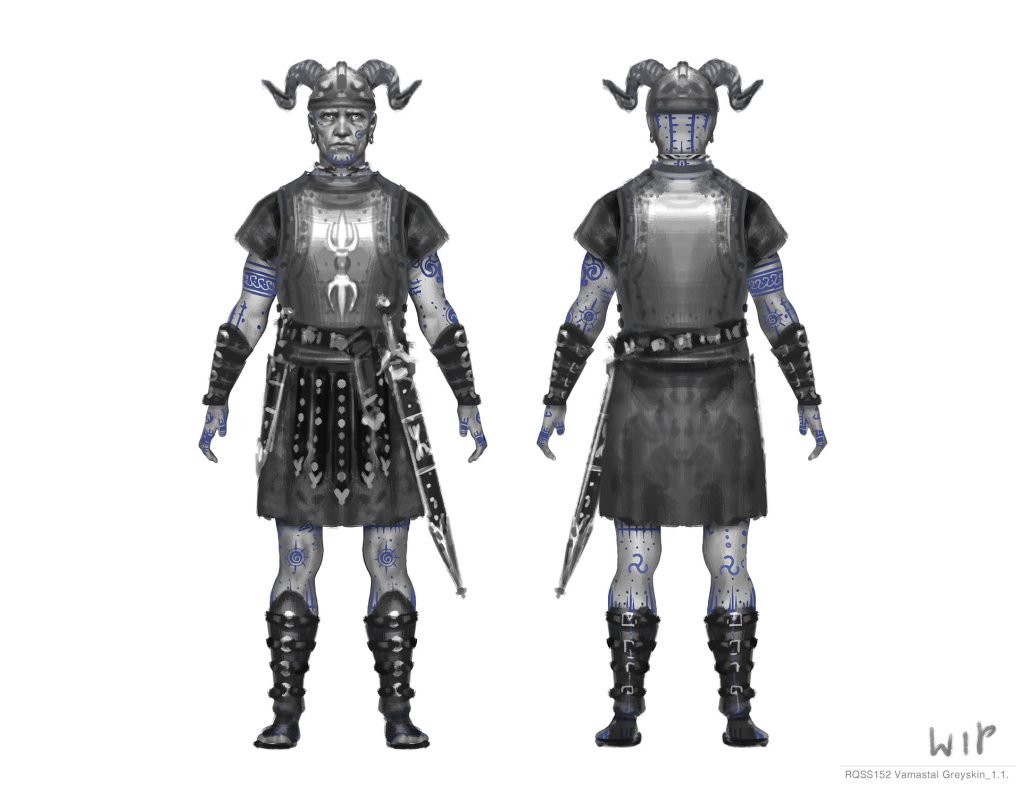
Note that the previous City Rex was exiled, rather than executed, because that was Fazzur Wideread’s way of dealing with things (Fazzur was the Lunar Tarshite Provincial Administrator in Sartar for a while). Exiling leaders made it easier to assert legitimate(-ish) authority on the people. “Remember Fazzur understood the Orlanthi, unlike Euglyptus of Assiday”.
Greg Stafford on Heroquesting
Jeff shares an early manuscript from Greg Stafford on the subject of heroquesting (that’s a hot topic this week!). It goes over the basic concept: that the world of mortals and gods has been separate ever since the “end of the world” and the Cosmic Compromise. In this way, mortals exist within Time, which means that they are born and die, but also means they can change during that lifespan. Deities however are immortal, but cannot change.
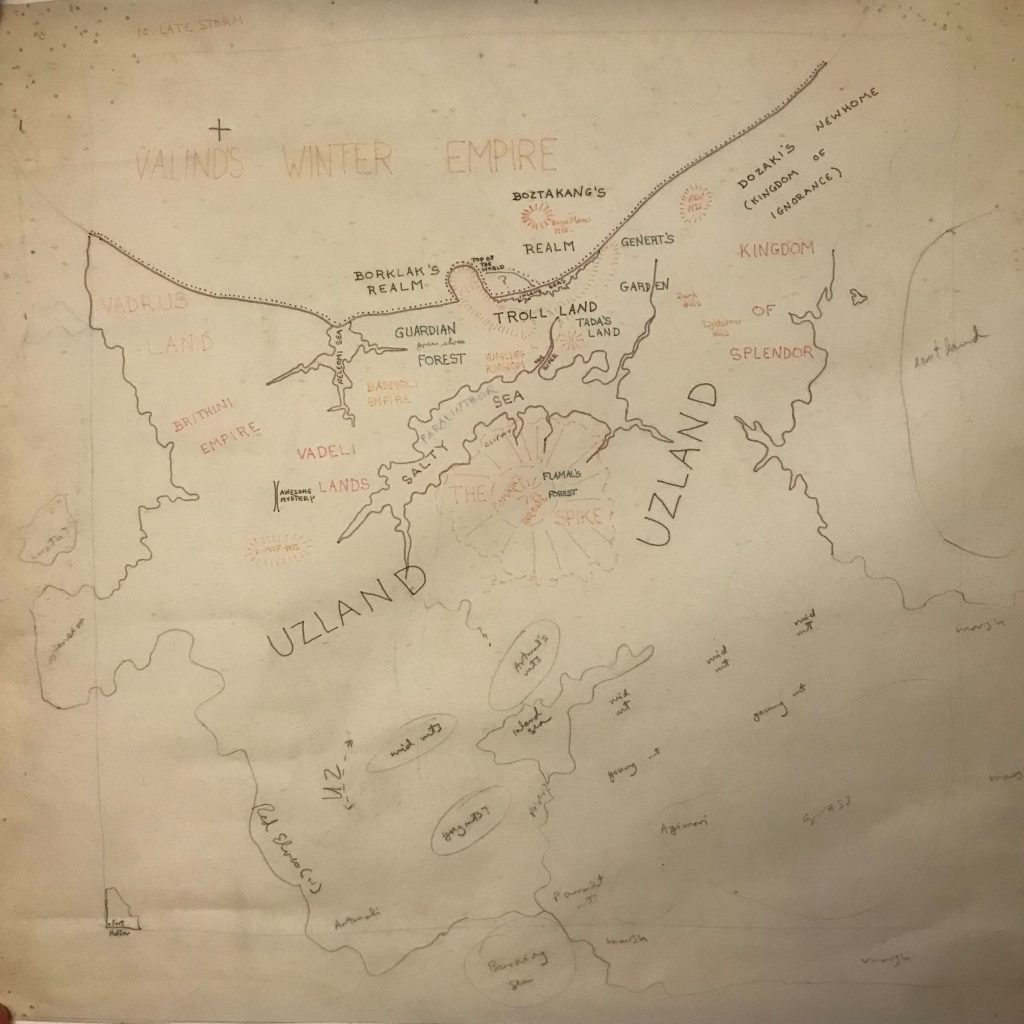
There are few bits that jumped at me:
The difference between the realms of the gods and of men is much more significant than mere mortality, for there are ramifications of great import. The most important is that mortals are born and die, but they are always changing, whereas the gods never change unless acted upon by an outside force.
The will of mortals allows a person to change themselves, change the mundane world, or even change the static world of mythology.
So when we say that gods can’t change, we mean that they can’t do anything themselves. Mortals can, and do, provide this “outside force” that changes gods. That’s what us God Learners did a whole lot of in the Second Age. It was pretty cool.
Greg writes (probably in the ancient pre-RuneQuest times) that heroquests are generally designed for “a single person to be the center of the action”. Any companions and followers gain “lesser benefits than those of the main quester”. Jeff wisely notes that this is the main challenge in bringing heroquests to RPGs, which are focused on a group of characters.
Heroquests generally take the form of a “path” which traverses a part of the mythical realm. It is presented as a starting place, a series of waystops where certain events occur, and then a climax. The climax is typically known beforehand because it is the specific act which will give the heroquester the thing they went off to get. This requires passing whatever test is appropriate, then the sacrifice of some part of them.
Jeff notes that this sacrifice at the climax is mechanically represented by a POW sacrifice in exchange for Hero Soul Points.
If you haven’t seen the White Bull campaign (Jeff’s game watchable on YouTube), which featured a preview of these rules, you may not know what these are. They’re effectively like a new pool of Rune Points, so you may have a Rune Points pool for your primary god, and then maybe another Rune Points pool if you have initiated with another god, and the Hero Soul Points are yet another point pool for casting Rune Magic. But while you replenish Rune Points by worshipping the appropriate deity, you replenish Hero Soul Points by having people worship you. This is such a cool mechanic, and a pretty unique one at that as far as I know.
Anyway, Greg talks about advanced heroquesting techniques, such as heading off from one myth to another and building a “map” of these mythic places and events.
However, the map requires that it be viewed in several different ways at once sometimes because of the interrelationships of certain mythical events. Successful heroquesters are able to switch from path to event and from map to map.
Jeff mentions that the Mythic Age maps from the Guide to Glorantha are helpful here, and I think there were most likely drawn by God Learners who did exactly that in their heroquests. Of note, Jeff also says that there will be more detailed maps in the upcoming Cults books.
The Guide’s maps (and the one from Greg visible above) are mostly geographic by nature, but I wonder if we will get narrative maps too, such as the paths leading from one important mythical event to another? Basically like a conspiracy theorist white board might look like if they were a Second Age God Learner? That would be interesting…
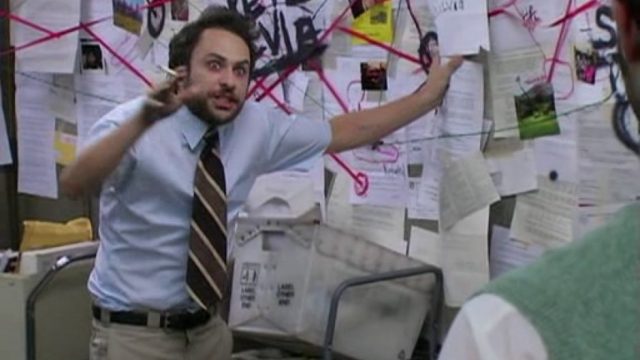
Thus it may be possible for a character to start at the Weapons Contest (between Orlanth and Yelm) and then follow the storm god until the Theft of the Sword (from Humakt) and then follow the Sword Myth through the hands of the gods that get it and enter the Underworld by marching with Zorak Zoran’s army, thereby bypassing regular checkpoints!
Finally, Jeff mentions that this kind of gameplay doesn’t have to require in-depth knowledge and review of Chaosium’s material. Gamemasters “can and should create their own mythic events that ‘fit’ into the themes and archetypes of Glorantha”.
Harmast’s Heroquests
Speaking of heroquesting (again!), there are short-form lists of Harmast’s heroquests in the RuneQuest Compendium (p6) and in HeroQuest’s Sartar: Kingdom of Heroes (p184), but Jeff just gave us a lot more details. It’s too long to share here (and, again, it will be on the Well of Daliath soon), but it’s a great inspiration for what’s possible with heroquests:
One thing that this list clearly shows is how heroquesting can move from “participating in big mythic battles” […], to events that are ultimately about the psyche of the quester […]. These last are likely the most dangerous – and most rewarding – but also the hardest to stage in a game.
A few things that stood out to me in Harmast’s list of heroquests:
- Two common heroquests in an adventurer’s life are (1) for their adulthood ceremony, and (2) for their Rune Lord/Priest ceremony.
- As far as I understand, when you’re participating as a “simple” initiate in a High Holy Day or Sacred Time ceremony, you will most probably be one of the many “extras” or “bystanders” in one particular event in a myth, which is a really cool way of starting small: “Twice he fought the star warriors at the Battle of the Thrinbarri Clouds. Four times he stood upon the Lightbringers’ Path: at the Bridge of Scythes, at the Crucible Gate, at the Bridge Over Corpses, and Where Kaarg was Defeated. At age twenty-one he was a spectator at the wedding of Orlanth and Ernalda.”
- Things go bad in heroquests, and there’s a lot of cool/bad stuff happening here. Like “everybody died except Harmast” kinda bad.
- Sometimes, you go on a heroquest just to get some advice from a mythical figure.
- Other times, you go really deep: “[Harmast’s] broken pieces were purified and he confronted and overcame his Others: his victims – demon lover, his father, his mother; his obsessions, his tyranny, and the destruction he brought. Then he passed through the flames of the Band of Gold and entered the Dead Gods’ Court.“
Ok, now I need to get better at coming up with cool things like “The River of Corpses”, and at making my players do really crazy things like “reaching the Purple Shores of Luathela”. Maybe I should start drinking?
Clans and Tribes
Jeff gives a glimpse at how clans, tribes, and confederations fit together, which he can do now that he has all the correct spreadsheets and maps. For instance, see this map of the Culbrea, Kheldon, and Aranwyth tribes:
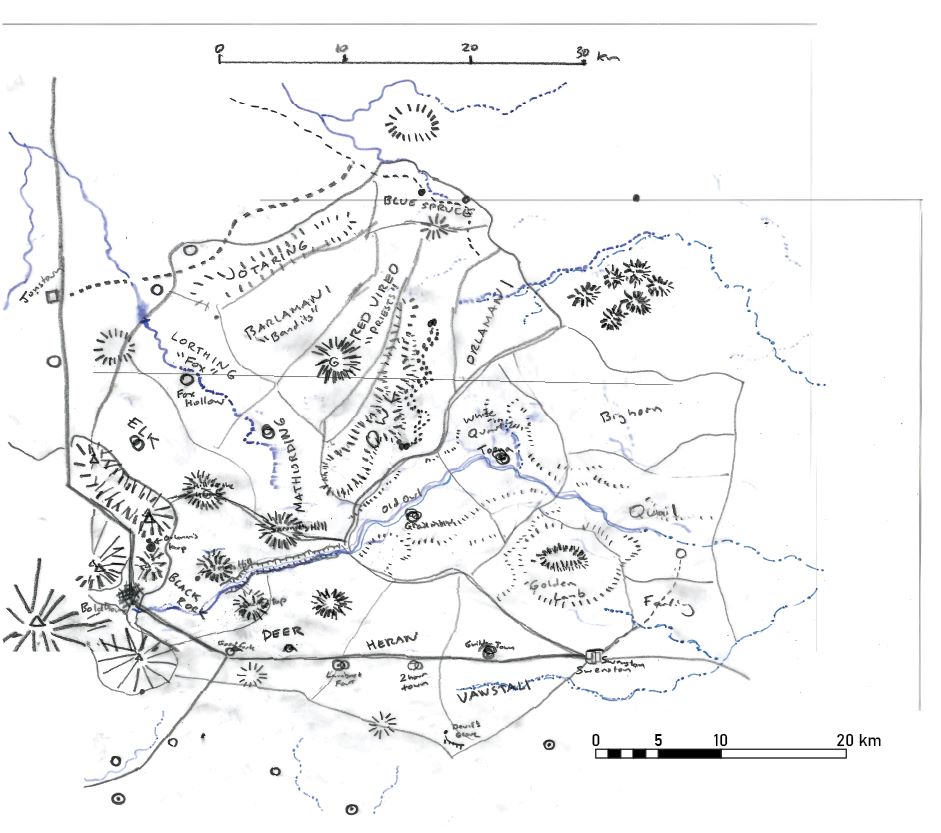
Even better, Jeff later shared a composite map of the central Sartar! I am so happy right now.
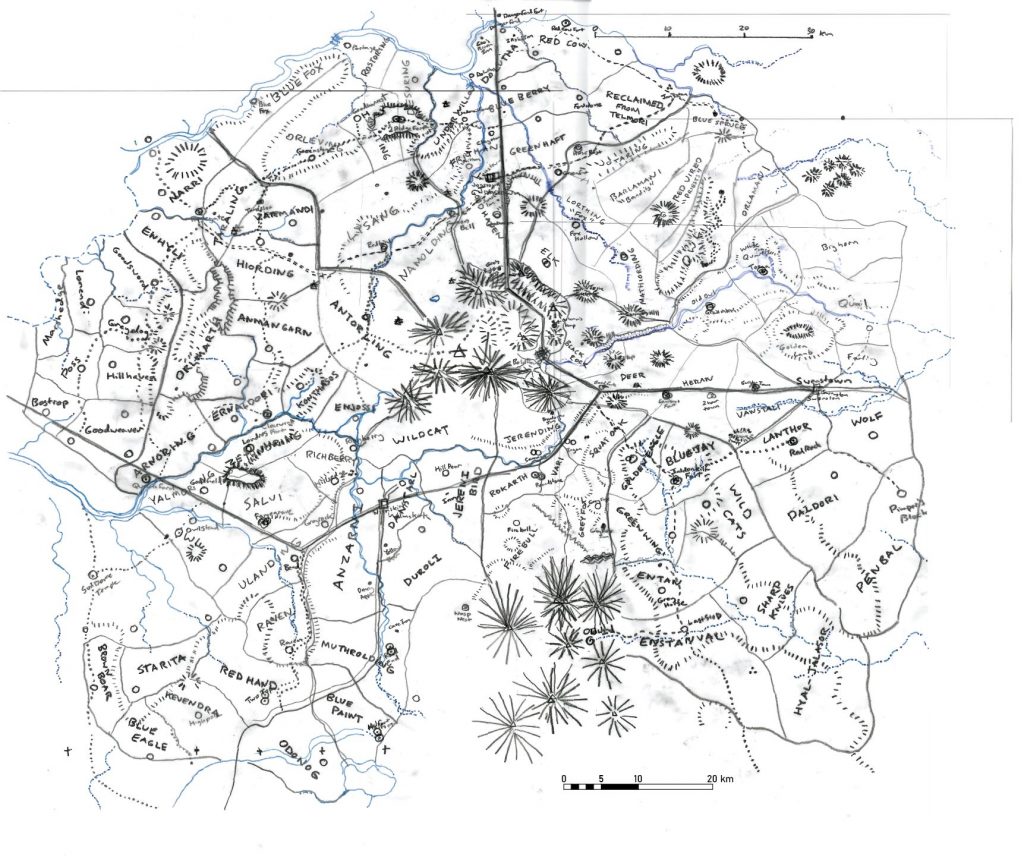
One thing that is worth mentioning is that there are several different clans with the same name. There are at least two Wildcat clan, and several Owl Clans. In some cases that might point to a common origin, and in at least one set of Owl Clans it is just that Horned Owls are mighty spirits!
Laying it down with roads, cities, holy sites, and such probably greatly helps with the basic blocks of world-building. That was actually my approach with my current campaign located in the Alone confederation (which, sadly is missing from the composite above). Sketching a map and making a cult distribution spreadsheet helped get an idea of the dynamic between all of the three local tribes. It probably doesn’t really transpires in play, but it was still fun to do!
Ancient Commentaries On Magic And Chaos
A God Learner text was “recently discovered in a warehouse in Berkeley”, a.k.a an ancient manuscript from Greg Stafford. It’s a bit hard for me to analyze and summarize (I’m still a newbie God Learner), but it basically deals with the multiple beginnings of the universe, the tension between Chaos and Existence, and what happens to the Runes as foundations of the world when left unchecked in the hands of Gods. Oh, and there’s a nice little Old Vadeli prayer.
The Vadeli are basically super ancient atheist sorcerer sailors (they hang around the Jrusteli Islands, the remnants of the God Learners’ original country). They claim to have been there at the First Beginning, when Existence broke away from Chaos, in the form of the “Grey Ones”. Every since, as far as the Vadelia are concerned, simply “being” has been a constant struggle against the entropy of Chaos.
If I understand this correctly, the other beginnings include, say, when the Runes came into existence. At first they were owned by single-purposed entities, but then they multiplied and cross-pollinated and this new World of Gods eventually turned too fat and self-centred and they almost broke the world and left Chaos back in. So there again there’s Chaos seeping through all elements but, err, that’s kind of necessary for existence, it seems? I’m not sure.
This, of course, allowed for the greatest sharing and positive exploitation of Uleria’s Net, and eventually led to the breeding between elements and bonding of the seams of the world. This all is confirmed by the Book of Zzabur, although the Brithini rejected its implications.
Empty Head’s Tale
And here’s another God Learner text: “Empty Head’s Tale”, which apparently exists in one form or another everywhere in Genertela.
Its widespread distribution is indicative of the truth which it contains. Brithini wizards claim to have found proof of the veracity of the tale in fragments of the Blue Book of Zzabur.
So the “Grey Ones” from the previous God Learner text are living in the Spike (which is the axis of the world in the God Time, the original perfect mountain). But meanwhile, somewhere else, there’s the titular Empty Head, who is minding his own business sitting on some giant dome call Eggshell which floats on the sea (I’m getting the sense that this old man was Zzabur or some other ancient sorcerer). Some people come live inside the Eggshell with his permission, and start digging and building and multiplying inside it. I guess that’s all the annoying Gods and their tribes and all that stuff, and the Eggshell is Genertela?
These people lived under the rule of “Quaterlords”, in a big castle called Hill of Four. My guess is that’s the four original Elemental Runes, before the arrival of the Air Rune. Which comes here under the very appropriate name of “Trouble”, supposedly as the son of two other Quaterlords. This Trouble guy asks for a place atop the Eggshell, but is refused. He throws a tantrum with his followers but gets his ass kicked.
Shortly afterwards he was crushed by the spearmen of his father and the axemen of his mother, and his followers fled. Trouble was tossed into the sea, left to swim around in the shoreless ocean forever.
Yet Trouble returned, and far more powerful than before. Amid the vast oceans Trouble had met Empty-head, and although the old man did not even know it, he carried a weapon against the Quarterlords. He did not understand it, but Trouble did. The weapon was the sword, and it was made by a Grey One or else was a son of Trouble. Newly armed, Trouble crawled back on the Eggshell. What followed was the Gods War, a terrible Darkness Age, whose consequences are still felt today.”
Ok so there are definitely elements of Orlanth getting Death/Sword from Humakt and/or Eurmal, only with different moving parts. It works nicely as a proto-version of the Orlanthi myth, with an atheist sorcerous twist on it. I may be completely off mark but that’s my take for now!
The Universal Lunar Empire
The Red Emperor “does not acknowledge the existence of other peers“, meaning that he’s the boss of everywhere that the light of the Red Moon touches… and hey, guess what, that’s the entire world! What a coincidence. However, the Red Emperor isn’t necessarily after ruling over the entire world. He’s OK paying far-away barbarians to “submit to him or at least to be allies”. “What is important is that they acknowledge his position as the sole pillar of legitimacy in the world”. See? He’s not totally a crazy megalomaniac… just, like, very much a crazy megalomaniac.
Community Roundup
The community roundup is our highlight of interesting things being mentioned in the Glorantha-related Facebook groups, sub-Reddits, and other similar online places.
Ardwulf’s Lair Unboxes the RuneQuest Starter Set
If you’re a fan of Harn1, Traveller, or wargames, you might be familiar with Ardwulf’s Lair, a YouTube channel that does reviews of, well, Harn, Traveller, and wargames, mostly.
1 Harn is another very old and very detailed gaming fantasy world which I love almost as much as Glorantha, even though you could say it’s practically its polar opposite!
Elf Pack Work-in-Progress
Shannon Appelcline, known among other things as an RPG historian and a Gloranthan elf-expert, is still working on some upcoming “Elf Pack” (like Trollpak, but for elves). He tells us that there will be, as tradition dictates, some encounter tables!
The Spirit of Lost in the Dark
Quickly becoming a regular around these parts, SkullDixon has a new thing for us: a short spirit encounter for use in RuneQuest.
One of the great things about Glorantha is that most things in that world have a solid spiritual connection. Disease in Glorantha is not caused by microscopic lifeforms, they are often caused by Spirits. […] So I thought to myself – what if the reason why people become lost in the dark was also because of a spirit who plays upon the mind of the traveler, making them confused and making it difficult to recognize where they are traveling through.
The article comes with a short RuneQuest stat block.
Miniatures Roundup
Let’s do some Gloranthan miniatures roundup!
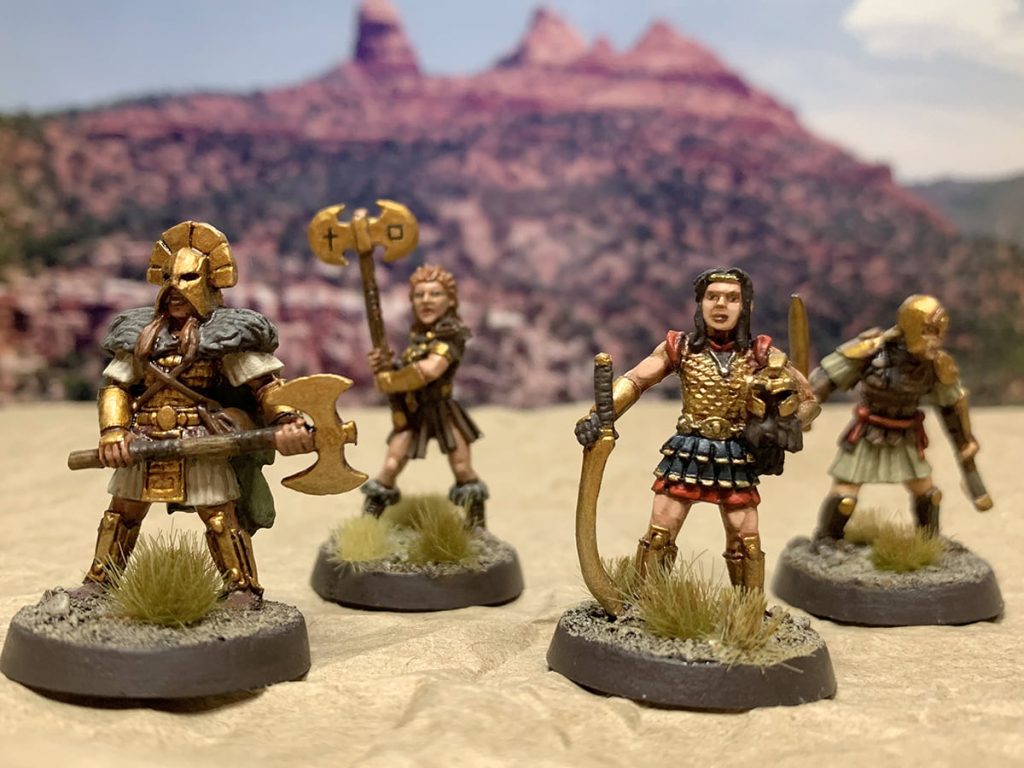
First, here are some Amazons by Bad Squiddo Games, painted by Phil Leedell — they make pretty good RuneQuest adventurers!
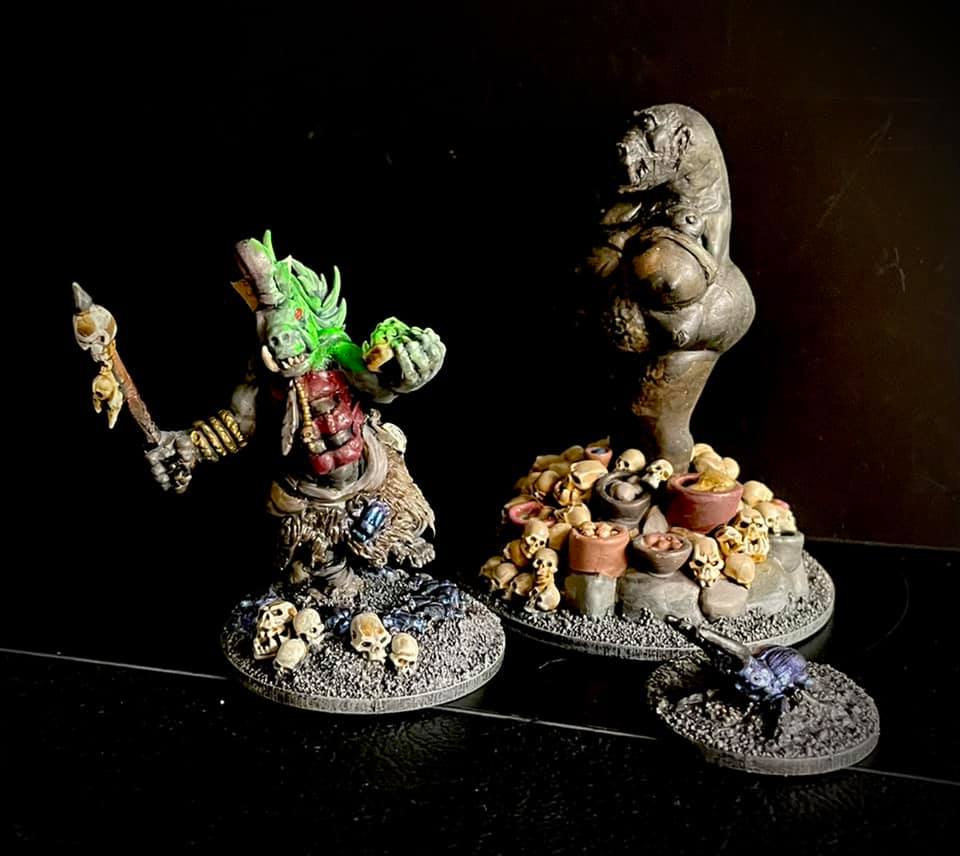
Next, some Mistress Race Trolls by Infinity Engine, painted by George Maczugowski:
So here i present Gerkalak, priestess of Kyger Litor and Gorakiki dancing the Summon Ancestor spell before the clan totem!
As far as I can tell, those are new models that are not available yet.

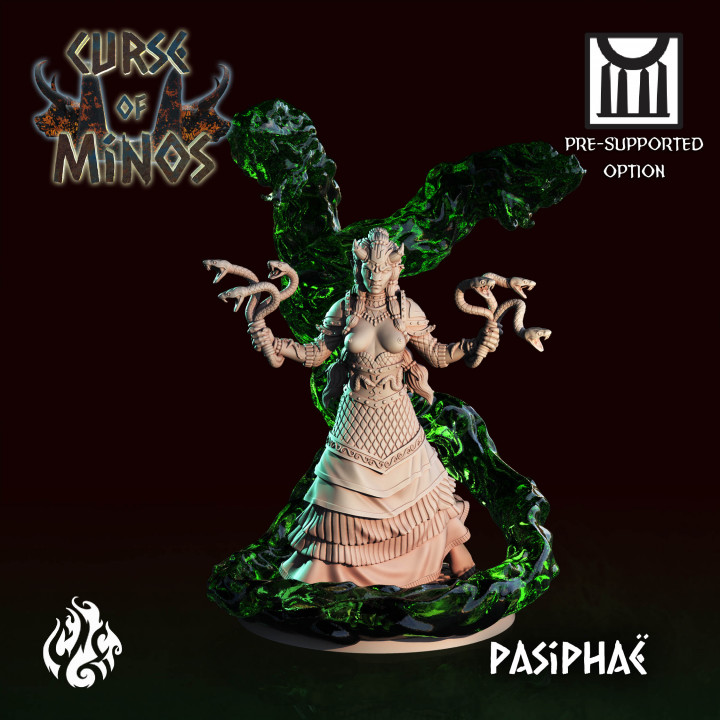
Last, there are 3D-printable Minoan priestess models available from MyMiniFactory (thanks to Nick Brooke for the links). The two models (Ariadne and Pasiphae) are from Crippled God Foundry, which is such an awesome name.
Elsewhere on Arachne Solara’s Web
Not everything is about Glorantha, although most things are! Here are loosely relevant things that we found on the interwebs.
Arkaim, Southern Ural
Here’s your Middle Bronze Age site of the week: Arkaim, in Southern Ural (in modern Russia).
Arkaim consists of a fortified settlement from the Middle Bronze Age, constructed around 3.8-4000 years ago. Arkaim was a circular stronghold that housed 1,500 to 2,500 inhabitants with concentric bastions, constructed using adobe, a building material made from earth and organic materials.
HeritageDaily has more information for you. I particularly like this digital reconstruction to help picture what it may have looked like, because it’s quite unlike what I’m used to (as a layman) in terms of Bronze Age settlements:
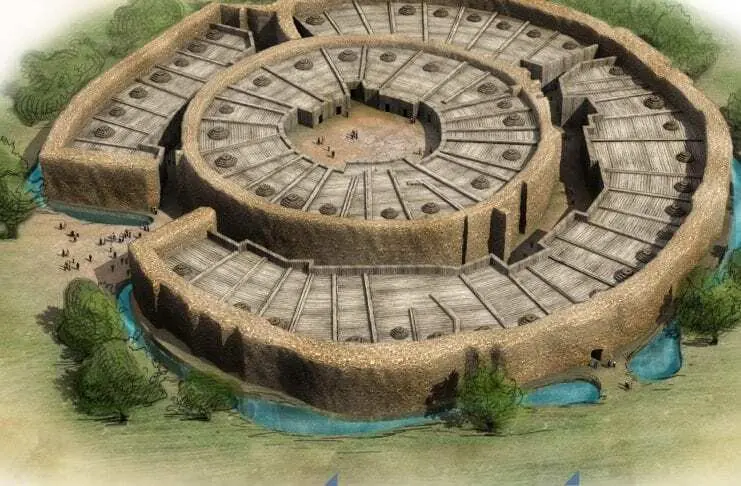
Scholars have some theories about this concentric design for the village, but in Glorantha, it wouldn’t take too much tinkering to make it look like a Fire/Sky Rune (for Grazelanders or Pentans), or an Air Rune (for Orlanthi).
Fans Wants Wizards of the Coast to use the Metric System in D&D
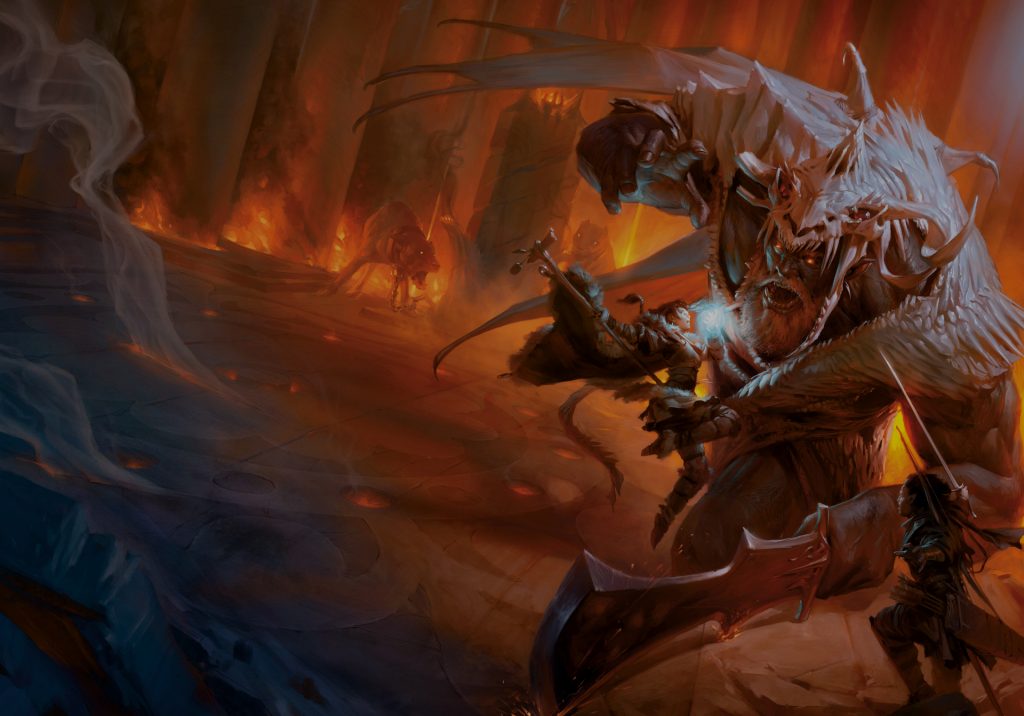
Yep, apparently it’s gaining traction, with one of those online petitions things (currently at more than 6000 signatures, for whatever that’s worth). Meanwhile, Chaosium cheekily reminds us that “Greg Stafford and Steve Perrin put the metric system into RuneQuest from the get-go (1978)…“. Yeah, I always wondered about that. I mean, as a European, I’m very grateful that this RPG uses the correct (yes, you read that right1) measurement system, but I wonder what kind of enlightenment made a bunch of Americans in the seventies come to that decision?
1 Ok so I commonly see arguments that “the metric system has no place in a fantasy game“, presumably because meters and kilometers are somehow not “poetic” enough or “too modern” or whatever. This argument is completely wrong on two levels.
- First, these people are often the same ones that also argue that they’re not running a “strictly historical simulation” and should therefore be able have anachronistic elements in their worlds (crossbows, stirrups, gumball machines, etc). Well, yeah, duh! But not metric distances, for some reason?
- Second, there’s a whole difference between what measurements the rules use, and what measurements your NPCs will be talking about in-world. Go ahead and have fun with your Issaries merchant negotiating the price for 250 shekels of dried food, or your chieftain asking for one guard to be posted along the wall every 12 cubits. Hopefully these all mean the same thing from one city to another! And even if it’s unified in, say, Sartar, it might be different between Nochet, Boldhome, and Prax! The only place for fun ancient measurement units in the rulebook is the Vasana saga text boxes, because just as players typically say “can I learn Bladesharp 2?” instead of “can I learn to focus on my sword’s hilt and ask Orlanth’s spirits to bless my blade with their magical wetstone?“, players will also talk and think about measurement units they know. And aside from, like, one or two countries in the world, that’s metric. So thank you Steve and Greg!
Thank you for reading
That’s it for this week! Please contact us with any feedback, question, or news item we’ve missed!


